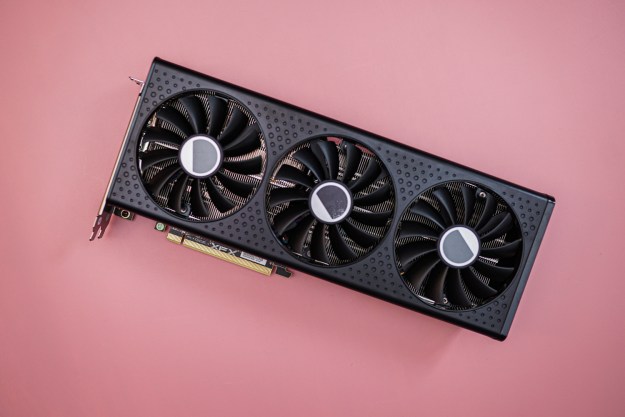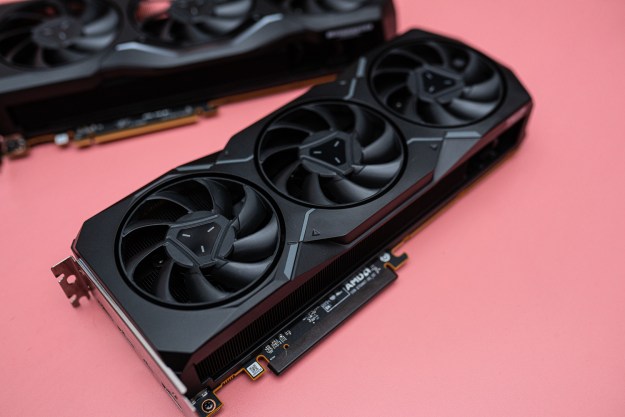The never-ending debate of AMD versus Nvidia has never been more of a close call than it is right now. With both manufacturers putting out some of the best graphics cards on the market, it’s hard to decide whether Team Red or Team Green is superior right now. It’s all about choosing what’s important to you and weighing it against what else is on the table.
Regardless of personal preference, there are a few things that Nvidia still does better, and that’s despite the fact that AMD has caught up a lot in recent years. Here are some of the reasons why Nvidia still maintains a commanding lead over AMD in many ways.
Performance
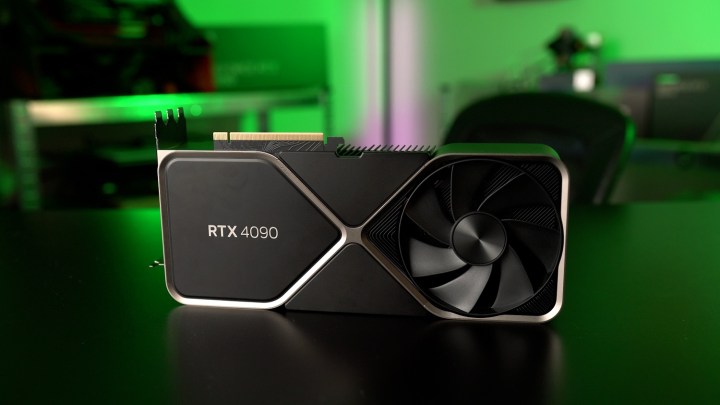
Nvidia and AMD are well-matched when you look at comparable cards. This mostly applies if you focus on raw performance without any extra bells and whistles, but we’ll discuss that more in depth later. However, there’s one place where Nvidia is the undisputed leader of the pack — the high-end.
Nvidia’s RTX 4090 is the graphics card to beat in this generation, and AMD isn’t even trying. Its flagship RX 7900 XTX is more of a competitor to Nvidia’s RTX 4080, and while it fares well against that card, it doesn’t have an answer to Nvidia’s top GPU.
It’s true that most gamers really don’t need an RTX 4090, so stepping down to an RX 7900 XTX is an acceptable choice for many and a good compromise. However, that doesn’t change the fact that AMD has completely locked itself out of the most high-end segment of the GPU market. Anyone who needs more power than the RTX 4080 or the RX 7900 XTX can provide will automatically default to Nvidia, as there’s no AMD counterpart. And the gap between the RTX 4090 and the RX 7900 XTX is huge.
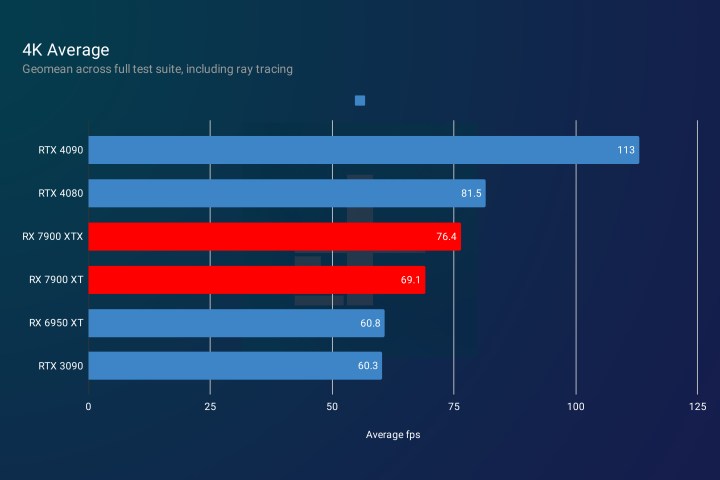
Pictured above is a chart showing the gap between AMD’s RX 7900 XTX and Nvidia’s RTX 4090. While the Radeon card was never made to compete against Nvidia’s best, the chart above shows just how much better Nvidia is here, and there’s nothing AMD can do at this point to close that gap. Well, not unless it has a high-end chip hidden somewhere up its sleeve, waiting to be released. That’s unlikely, though, as AMD itself has said that it’s not looking to compete at the high end.
Right now, everyone who wants the best of the best will go to Nvidia, and this will only continue in the next generation. Rumor has it that AMD is also sitting out the high-end race with its next-gen RDNA 4 graphics cards. I don’t necessarily think it’s a bad thing, though. Cards like the RX 7800 XT show that AMD truly shines in the midrange sector where Nvidia’s generational improvements are lackluster, despite price increases.
Even though it might be good for AMD to niche down and really target the mainstream segment, the fact remains that this gives Nvidia the upper hand if you’re judging the cards on performance alone. The bar is simply set higher than AMD can hope to reach right now, and we don’t know when, or if, that will change.
DLSS

It’s not possible to compare Nvidia to AMD without discussing Nvidia’s Deep Learning Super Sampling (DLSS) technology — especially now, with DLSS 3 (and DLSS 3.5) out in full force. While DLSS was a nice-to-have feature in the previous generation, the third iteration of this tech brought it to new heights, and those heights are still unreachable for AMD.
DLSS 2 was still often regarded as better than AMD’s FidelityFX Super Resolution (FSR), but it had its flaws. Visual artifacts and overall low quality made it easy to skip. DLSS 3, on the other hand, generates entire frames instead of just pixels and offers a massive boost in frames per second (fps) in some of the most demanding games, taking them from unplayable to perfectly fine.
It’s a game changer on more budget-friendly graphics cards, like the RTX 4070. As you can see from the chart above, enabling DLSS 3 on the $600 RTX 4070 allowed it to hit 73 fps in Cyberpunk 2077, and that’s at 4K with ray tracing enabled. Meanwhile, AMD’s second-best GPU, the RX 7900 XT, trails behind with 18 fps alongside the rest of Nvidia’s product stack.
DLSS 3 isn’t some magical thing, though. It’s not available in every game and you might choose to leave it off sometimes. It can make certain titles feel a bit sluggish and it adds latency — something that Nvidia Reflex can help with, but not entirely fix.
While imperfect, DLSS 3 is a huge selling point for Nvidia in this generation. It might as well be selling access to DLSS 3 instead of actual graphics cards, because this tech is so powerful, but the GPUs themselves aren’t that much of an improvement over the previous gen — bar the RTX 4090.
AMD hasn’t had an answer to DLSS for a long time. FSR 1.0 was underwhelming; FSR 2.0 was a major improvement, but still not quite there. Now, with FSR 3 finally out almost a year after it was initially announced, we might see AMD and Nvidia on a more level playing field in the future. As soon as AMD seems catching up, though, Nvidia is pushing ahead with DLSS 3.5 with the new Ray Reconstruction feature.
Ray tracing
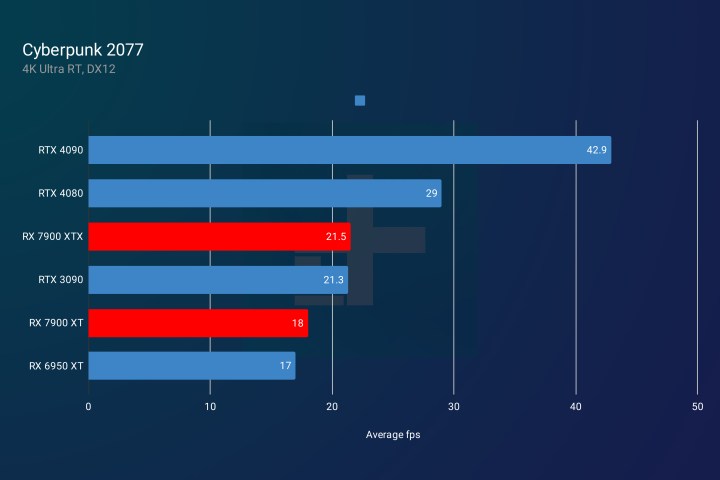
Ray tracing is another no-brainer when comparing AMD to Nvidia. AMD has made great strides over the last couple of generations to catch up to Nvidia here, but despite those efforts, Nvidia is still the king of ray tracing — especially at higher resolutions.
If you look at the graph above, you can see how current-gen GPUs can’t handle Cyberpunk 2077 at its highest ray tracing preset without some upscaling help. Still, it’s clear how much further Nvidia is ahead here. AMD’s current-gen best is competing with the last-gen RTX 3090, while the RTX 4090 is providing around double the frame rate.
The biggest issue here is that AMD hasn’t improved that much from one generation to the next. After all, the RX 6950 XT does just as well as the RX 7900 XT, and they’re both not that far behind the RX 7900 XTX.

The two GPU makers are a little closer when you move down the ladder to the RTX 4060 and the RX 7600. Neither was made to handle ray tracing at ultra settings, but both of them do a similar job of it; however, Nvidia still shows a commanding lead in every benchmark.
For those who don’t care about ray tracing, this isn’t a deal breaker, but it’s hard to deny that Nvidia still does it better.
AI and productivity
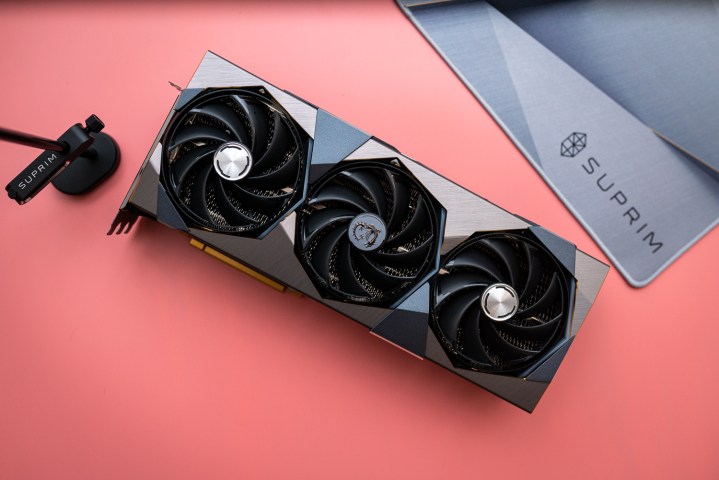
It’s not all about gaming — consumer graphics cards are also used for productivity, including things like AI or machine learning (ML) workloads, content creation, streaming, and 3D modeling. This is another segment where Nvidia has an edge, and with the current AI boom, cards like the RTX 4090 can be worth their weight in gold if you need something powerful to handle such workloads.
Nvidia’s lead over AMD in AI comes down to several factors. For one, Nvidia is simply a few years ahead — it dipped its toes into AI sooner than AMD did, and that gave it a unique kind of lead where a lot of platforms are simply in a better position to deal with Nvidia cards rather than with AMD. Nvidia has heavily invested in software development and support for AI tasks across its product stack, coming out with software like TensorRT, NCCL, and more.
Due to how long Nvidia has been in the AI game, many tools and libraries are still designed mainly for Nvidia’s CUDA platform. The CUDA Deep Neural Network (cuDNN) library, which benefits from GPU acceleration, is widely used in deep learning frameworks like TensorFlow and PyTorch. CUDA acceleration is built into other applications as well, such as Blender, where even older Nvidia cards leave the competition in the dust.
AMD has its own platform for GPU-accelerated computing, dubbed the Radeon Open Compute (ROCm). However, due to how widespread the support for CUDA is compared to ROCm, it’s an uphill climb both for AMD and anyone who ventures to use its cards for AI/ML workloads.
Software aside, Nvidia also has a lot of hardware support for AI. With dedicated Tensor cores and RT cores both working well with its software stack, Nvidia is — well, stacked. AMD’s RDNA 3 graphics cards also come with AI accelerators, but with the limited reach of ROCm, it’s still far from becoming the go-to solution for AI.
Even if you’re not into AI or machine learning, Nvidia still has AI-powered software that can come in handy, such as Nvidia Broadcast, which provides AI-enhanced videoconferencing. It’s often said to be better than any third-party software at improving voice and video quality and auto frame, and providing virtual backgrounds. AMD’s alternative Noise Suppression isn’t on the same level, and it doesn’t have a video solution the way Nvidia does.
VR

Historically, Nvidia has been the go-to for PC virtual reality (VR), and drivers and overall support have a lot to do with that. It doesn’t help that AMD gets a bad rep for its drivers in general, and unfortunately, in the case of VR, those who complain are sometimes right.
Even the AMD subreddit features posts from people who are dissatisfied with the performance of AMD’s RX 7000-series GPUs in VR. It’s worth noting here that these issues are not universal; it depends on your operating system, the game, the video codec, and the graphics card in question. However, the general consensus is that Nvidia is the way to go for a seamless VR experience.
Users have even reported problems with the RX 7900 XTX and the RX 7900 XT, in particular, with some regretting switching from RDNA 2 to RDNA 3 — all because the newer graphics cards actually offered worse performance in VR than their older counterparts. This could be because the last-gen drivers are more mature and AMD has had more time to iron out any issues, but the expectation always is that the GPU will perform well out of the box. That isn’t always the case here, and Nvidia tends to perform better across the board, anyway.
If the problems with VR on Windows on AMD graphics cards are indeed down to driver issues, then it’s even more of a shame. AMD’s GPUs appear to be well-suited to VR on the hardware side, with plenty of VRAM, so you’d think they’d be the better option here.
Nvidia’s graphics cards are often starved for video memory in this generation, with GPUs like the RTX 4060 Ti sporting a measly 8GB, while the AMD RX 7800 XT comes with 16GB. At the high end, both AMD and Nvidia serve up 24GB of VRAM, but as we’ve already established, the RTX 4090 is a much more powerful GPU. Still, if you’re spending $1,000 on the RX 7900 XTX, you’d expect the performance in VR to be acceptable — and while it is for some, it could definitely be better for others.
A lot to consider
Although it’s clear Nvidia has a lead in certain areas, that doesn’t mean you should discount an AMD GPU wholesale. There are areas where AMD has a lead over Nvidia, such as overall value, VRAM capacity, and a feature-rich software suite. In fact, we rounded up the only four GPUs you should consider this generation, and two AMD options show up there. As is always the case, the GPU that’s right for you comes down to what features you need, and the price you’re willing to pay for the performance you want.
Editors' Recommendations
- New Nvidia update suggests DLSS 4.0 is closer than we thought
- Nvidia is bringing ray tracing and DLSS 3 to your car
- My most anticipated game of 2024 is getting the full Nvidia treatment
- Nvidia is the ‘GPU cartel,’ says former AMD Radeon manager
- This might be why AMD’s FSR 3 isn’t picking up momentum




